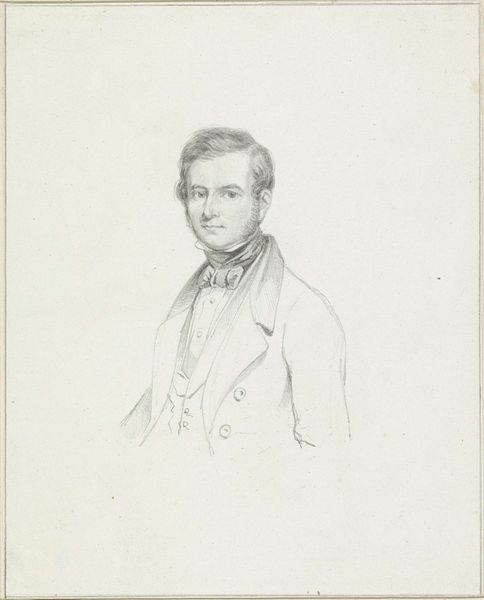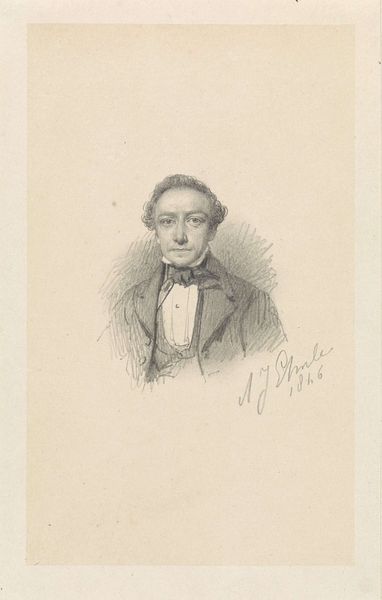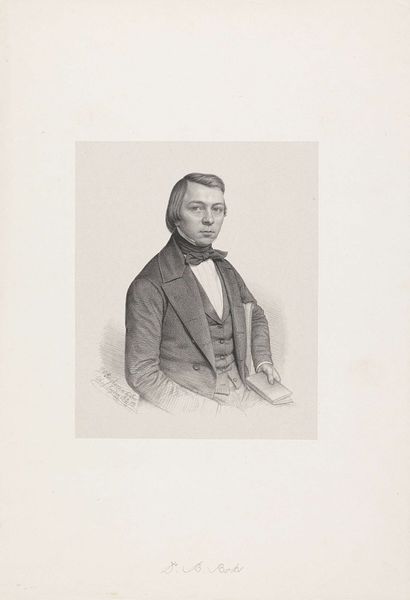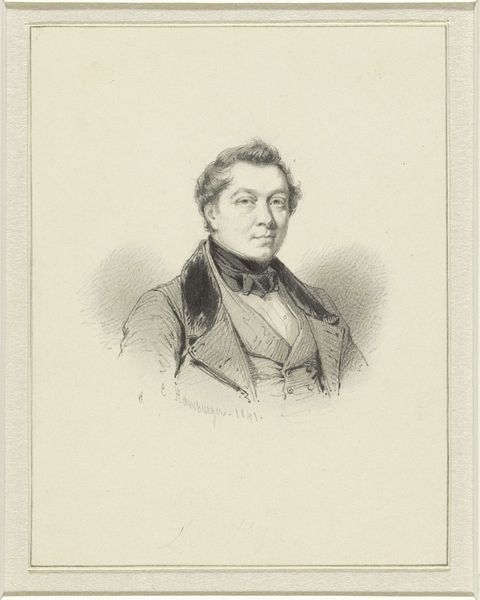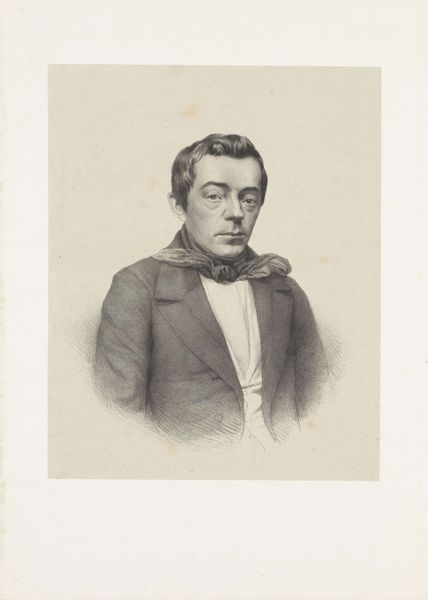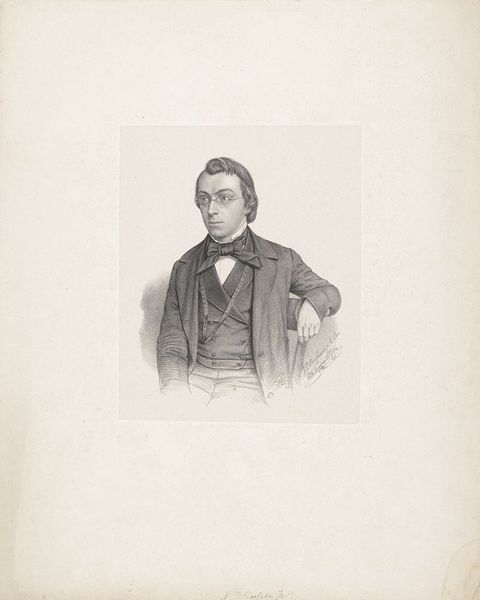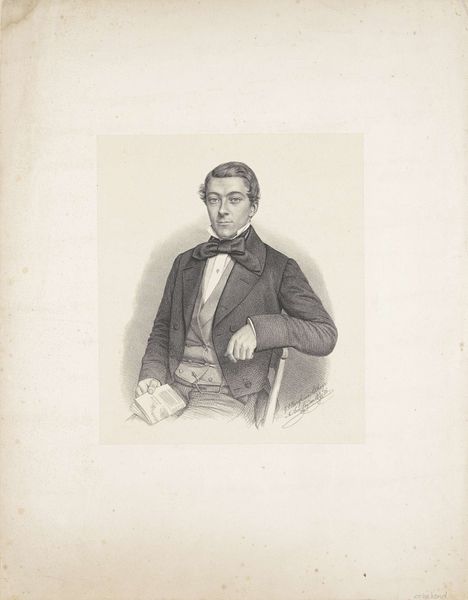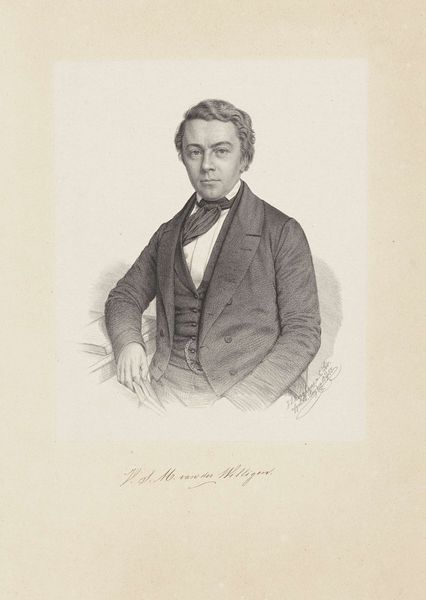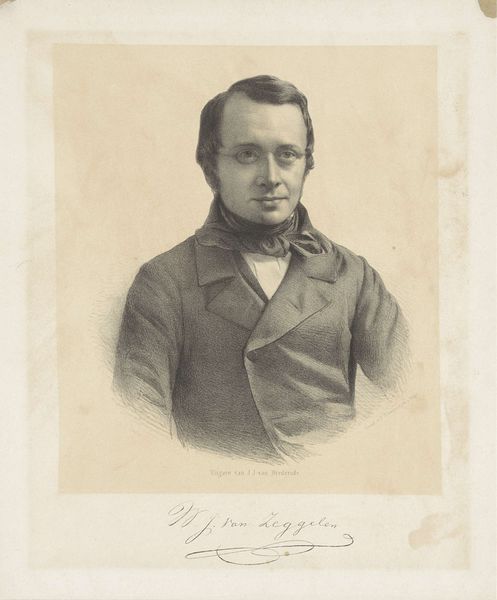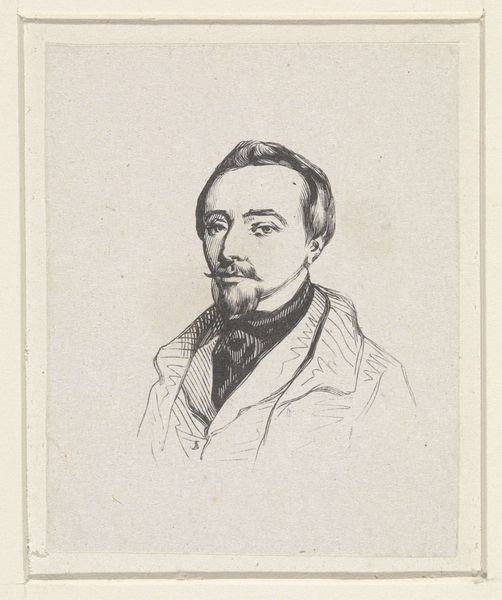
drawing, pencil
#
portrait
#
pencil drawn
#
drawing
#
pencil drawing
#
romanticism
#
pencil
#
portrait drawing
Dimensions: height 157 mm, width 100 mm
Copyright: Rijks Museum: Open Domain
Curator: This is Adrianus Johannes Ehnle’s "Portret van Christiaan Lodewijk Willem Dreibholz," created in 1846. It's currently housed here at the Rijksmuseum. Editor: Immediately, I notice how the artist utilizes the texture of the pencil strokes to evoke a certain… delicacy? A quiet introspection seems to emanate from the subject's face. Curator: Absolutely. The artist masterfully uses line weight and hatching to model Dreibholz’s face and clothing, focusing primarily on light and shadow. The tonal range is narrow, yet it effectively suggests form and depth. Consider the composition; the figure is centered, gazing directly at the viewer, instilling a sense of direct engagement. Editor: Thinking about the social aspect: The choice of pencil as a medium in 1846 isn't arbitrary. Pencil drawings were more accessible than painted portraits. Was this perhaps intended for wider circulation, or was the choice dictated by affordability? Who was Dreibholz? And why depict him this way? Curator: Intriguing questions! The formal elegance hints at a Romantic ideal, doesn't it? The soft rendering softens his features, idealizing him in a way consistent with portraiture conventions of that period. Note the controlled execution, especially the treatment of the hair and the detailed folds of his coat; there’s precision here. Editor: Still, thinking about the means of making, I see a labor-intensive method resulting in an affordable image. It represents a burgeoning middle class eager to emulate aristocratic displays of status through portraiture but constrained by material realities. A negotiation unfolds between aspiration and available materials, where pencil functions as a potent tool of representation. Curator: Perhaps the accessibility broadens the market for Ehnle, thus expanding his studio and workshop production. Editor: And yet the piece's seeming simplicity belies its depth. I’m left wondering what the drawing may have meant to the sitter or those who circulated it in his social sphere. Curator: Indeed. The act of studying its formal properties reveals that beyond aesthetic choices are reflections of material considerations and the social environment in which art exists.
Comments
No comments
Be the first to comment and join the conversation on the ultimate creative platform.

